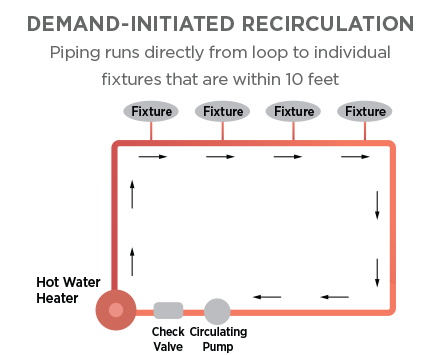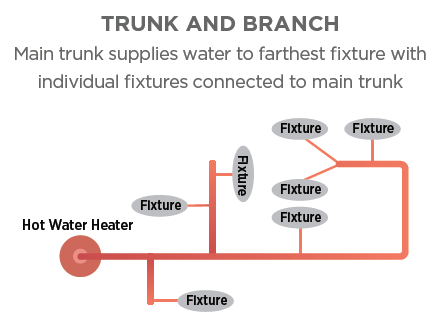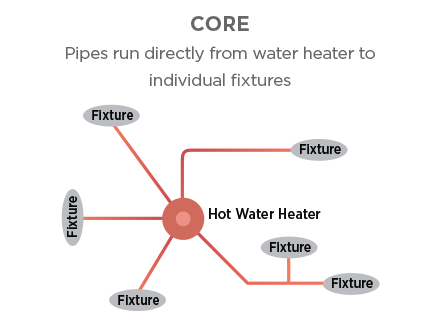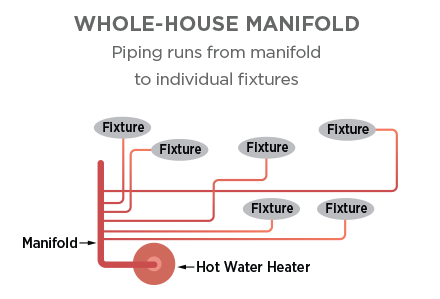WaterSense Labeled Homes-Hot Water
Hot Water Distribution Product and System Design Solutions
Efficient plumbing distribution systems get hot water to the tap faster, so you waste less time, water, and energy.
What: Reduce the waiting time for hot water by designing and constructing cost-effective plumbing systems that save water and energy while increasing customer satisfaction.
Why: Heating water is typically the second largest use of energy in a home (after space heating and cooling). Careful planning and thoughtful design/selection can result in efficient distribution systems without significantly increasing costs or installation time. A high-performing plumbing system ultimately saves the homeowner money and allows builders to deliver a better product to their customers.
How: WaterSense labeled homes minimize water loss by storing no more than 0.5 gallons of water between the hot water source and any hot water fixture. The hot water source is typically a water heater, but it can also be a demand-initiated recirculation line.
Product solutions
Product solutions offer builders flexibility by allowing for longer pipe runs and less centralized fixture placement, while still meeting the WaterSense specification in just about any size floor plan.
If building a smaller or larger home with many fixtures that are not not centrally located, a demand-initiated recirculation line may be a good option. Piping runs directly from the loop to individual fixtures that are typically within 10 feet of the loop.

What to know:
- Can be used with a less centralized layout where longer pipe runs would otherwise be necessary
- Might be more expensive to install than other system types
- Saves water, energy, and money while adding a desirable feature to the home
- May require homeowner training
- If designed properly, can be the most water-efficient hot water delivery system
System design options
It’s all in the design. Structural solutions minimize pipe run lengths and pipe diameters to help builders meet the WaterSense specification.
For Smaller Homes with Fewer Fixtures in Close Proximity
Option 1 -
A trunk and branch system where the main trunk supplies water to farthest fixture with individual fixtures connected to main trunk.

What to know:
- Most common with plumbing professionals
- Can result in long wait times and wasted water if misapplied
Option 2 -
A core system where pipes run directly from the water heater to individual fixtures.

What to know:
- Less material, less expensive, and less time to install
- Requires planning to centralize fixtures
- Greater potential for efficiency
For Larger Homes with Many Fixtures
Another design option may be a whole house manifold system where piping runs from the manifold to individual fixtures.

What to know:
- Can be installed more quickly than traditional rigid systems
- Requires fewer fittings and installation is more flexible
- Equalizes pressure so fixtures can be used simultaneously without pressure or temperature changes
- Reduced pipe diameter delivers hot water faster and with less water and energy waste

